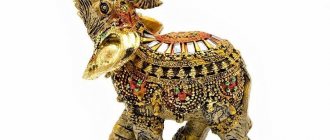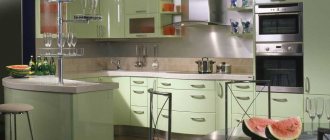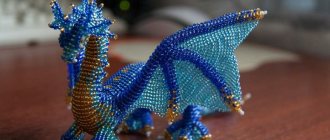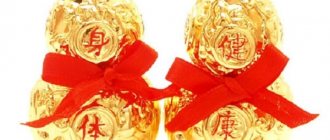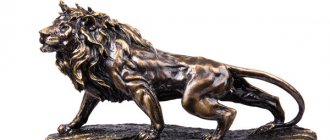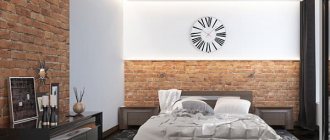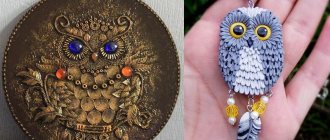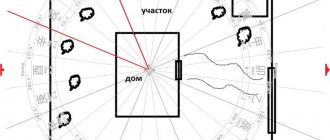Ancient Chinese art
Feng Shui is a very old art, which was banned for a long time, but was discovered relatively recently by Europeans. If we literally translate the name, which consists of two hieroglyphs, we also get two words: fen - wind, shui - water. This combination is first found in the Treatise on Burials, dated 5 millennium BC, but the history of Feng Shui is much older.
Chinese science is the result of the empirically accumulated experience of many generations, which was documented approximately seven thousand years ago.
For those living at that time, water and wind were the most powerful natural forces. The harvest, prosperity, and human life itself depended on their favor. Therefore, the elements had to be favored so that they would not punish the village with drought or mudflow. However, if in Europe paganism meant worshiping the forces of nature, bringing gifts and sacrifices, then in China a different approach prevailed. The sages observed the elements, reflected on their essence and dual nature. After all, the wind could either bring a bountiful harvest or destroy the crops with a hurricane. Water, on the one hand, could provide abundant food for livestock, and on the other, devastate entire provinces with floods. This knowledge became the basis for the emergence of Feng Shui - the doctrine of the optimal arrangement of objects in space to ensure the beneficial movement of energy.
The Chinese believe that everything on Earth is permeated with invisible, life-giving energy. They call it “qi” or “ki”, in India another word became widespread - “prana”, the American Indians knew it as “orenda”, the Polynesians used the name “mana”, and the ancient Germans - “od”. It is an all-pervading, sacred, primordial, cosmic energy of divine origin. Thanks to her, all life on earth exists. It unites humans and plants, animals and stones, the dead and the living. The well-being of the surrounding world and its inhabitants directly depends on how freely and unhindered energy can flow in space. Therefore, to acquire health, luck, love, respect or wealth, you only need to correct the flow of Qi. Feng Shui, acupuncture, Chinese numerology and astrology, and many martial arts are based on this main postulate.
About yin and yang
The natural interaction of the forces of yin and yang must be maintained at all levels, starting with the individual. A person's character and health reflect the movement of yin and yang in his body, which in turn is influenced by the objects around him, the area in which he lives, and the degree to which he has subjected his natural environment to changes.
In this regard, a whole range of problems arises. At an ecological level, large-scale cutting down of trees or diversion of river channels can lead to floods or droughts. On a personal level, problems range from increased dampness in the home to bouts of insomnia, from career setbacks to deteriorating health.
A feng shui specialist working on an individual level can suggest various ways to correct these problems. In the worst case scenario, he may suggest moving the house to another location altogether, but such situations are extremely rare. As a rule, the necessary changes do not require large financial investments and do not take much time.
The art of Feng Shui is highly respected in many areas of the Far East, especially Hong Kong. A Feng Shui master usually takes as much part in the planning of a building as an architect.
Sometimes during construction work, consultations with a geomancer are constantly used. If the business of a company is in decline, the owners of the company often turn to a Feng Shui master for advice in order to improve the situation; sometimes it is enough to move the catalog boxes or move the doorway to another part of the wall.
In the case of a child suffering from chronic illness or doing poorly at school, the solution to the problem may simply be related to the size of the study table or the position of the bed in relation to the window. Even in situations where there is no room to rearrange the furniture and changes in the building structure are impossible, it is almost always possible to find a partial solution to the problem.
A properly placed mirror or a living green plant can restore harmony to your home.
Divine Harmony
The history of Feng Shui is closely connected with one of the mythical emperors of China - Wu of the Xia clan. According to legend, he was working on the banks of the Yellow River when a huge turtle crawled ashore. According to old beliefs, this was a favorable sign, since in Ancient China they believed that gods lived under the shell of turtles. However, as soon as Emperor Wu took a closer look at the guest, he saw an amazing pattern (Lo Shu) on her back. In the strange 3x3 square, later called magic, there were numbers from 1 to 9. The sum of all diagonals, rows and columns was 15. This fact delighted and surprised the emperor, so he ordered the court sages to study the turtle shell. It was from the magic square that Feng Shui, the classical I-Ching - Book of Changes, Chinese astrology and numerology began their history.
For a long time, Feng Shui was considered a divine gift, so only members of the imperial family - divine descendants - could use it. Feng Shui masters worked for the emperor, erecting tombs and tombs, palaces and temples. To prevent the spread of divine science among his enemies, the emperor strictly controlled the masters. They were often not allowed to leave the palace; the transfer of knowledge took place within the same family.
Belief in the power of Feng Shui was so unshakable that the secrets of the teaching were considered information of national importance. According to legend, the chief adviser to the Imperial House of Hi Tsang, named Yang Yun Sang, was able to systematize and streamline the teaching. According to his books, the first ruler of the Min dynasty, Zhou Yuanzhang, built his own palace, but then ordered the execution of all Feng Shui masters, replacing the books with fake ones, so that no one else could take advantage of the benefits granted by divine science. The third emperor of the Ming Dynasty used forged sources when he built the Forbidden City. The latter, as is known, soon burned to the ground. Lost knowledge was rediscovered only during the Qin Dynasty.
Arrangement of the work area
We use figurines and talismans in the workplace
How to arrange a work area so that all employees feel comfortable, business flourishes, and customers buy goods and services? The art of Feng Shui helps to do this correctly. A travel agency, office, beauty salon can be created in compliance with all the rules of the Chinese methodology. The layout of the trade hall and warehouse has its own nuances. Let's look at some examples.
Feng Shui office
To properly equip an office according to Feng Shui, you need to focus on the personality of the director and chief accountant. First, its astrological characteristics are calculated, and then the layout of the room itself begins. It is important where the building is located and what kind of entrance it has. You cannot place an office in a dark alley or dead end. Cars must freely drive up and park near the building.
Basic Rules:
- To increase profits and attract buyers in the southwest, you need to install an aquarium, fountain, and shells. Water in the Southeast works for the long term. On the same side there should be a desk for the boss and key managers responsible for the company’s work, international image, and put their signature on documents.
- Water in the northeast or northwest is not the best choice.
- If desks have sharp angles, the office needs a reshuffle. The passage to the workplace should always be free, chairs and cabinets should not be piled up, and it is always worth keeping things in order.
- Windows can be located behind employees only when there is beautiful nature (a park or square), and not a highway, a bridge, a noisy city block or a “lunar” landscape of a wasteland.
- The arrangement of items should take into account the year of birth of the boss and the year the building was erected. It is best if there are 42 objects in the room, this increases the ability to work, perseverance, and work efficiency.
- Color decisions are largely influenced by psychology. Orange encourages creativity, red excites, blue calms, and green relaxes. You can hang colored panels in different areas (orange - in the work area, blue - in the director’s office, red - at the entrance, green - in the rest room).
- To ensure that employees work at computers without problems, you need to place pots with plants nearby. It is good to create a light breeze in these places with the help of fans.
- It is advisable for the office to be low noise. For making windows and doors soundproofed.
- There are no strict prohibitions on shelves, document racks, or blinds with sharp corners. In most cases, they do not change the energy. If such things cause discomfort, it is better to replace them with furniture with fused lines.
The company's performance can be improved 2-3 weeks after the consultant has drawn up a plan and changed the office design. It largely depends on the place of residence and arrangement of the home of each employee, especially the bosses, because the home environment affects people much more than the work environment.
Feng Shui of a hair salon
It is best to choose a building that is round or horseshoe-shaped. It is good if it is built of red brick and the façade is lined with green material. It is best if there is a park or square nearby and a green alley in front of the entrance.
As for the design of the room itself, experts recommend the following:
- The door should be wide. Any shape is acceptable: arch, square, rectangle.
- You can hang air bells on the door; they protect you from evil people and neutralize negative energy from the street.
- The hallway or dressing room should be spacious and well lit.
- It is important that the visitor hall has many large windows.
- The best colors are light beige, green, peach or pink.
- There should be no beams on the walls and ceiling.
- The wood for finishing walls and floors should be smooth and free of knots.
- The office of the manager and accountant (if any) should be located in the southeast or west.
- The room where pedicures or manicures are done, where nail polish is applied, is best placed on the north or north-west side.
- The cutting area is located in the south or southwest.
- It is very important to clean the room immediately so that there is no residue of hair or nails left on the floor.
Feng Shui is used to create a company logo, select the most convenient locations for branches and correctly correlate them with the main office. You should not think that you can repair the building, make a rearrangement, and this will solve all the problems. Feng Shui only reconfigures the energy, the rest depends on the people.
Mass distribution of art
Chinese ruling class philosophy encouraged a very limited process of transmission of secret knowledge. Most often, information was passed on from the father to the eldest son. The process of learning the secrets of Feng Shui lasted for many years, even decades. But, despite this, history wanted Feng Shui to go beyond the imperial palace, and in the 19th century, beyond China. In 1868, Reverend Yates, who came to the country as a missionary, published the first English-language article on ancient art. In 1873, Ernest J. Eitel continued the topic with a whole book.
The popularity of the destination, however, has encountered certain difficulties. After the overthrow of the imperial power and the emergence of the communist government, the use of Feng Shui became officially prohibited. Therefore, science went underground again. Dramatic events in the country caused massive flows of refugees, who brought to the new land the familiar teaching about the harmonious flow of divine energy. This is how Feng Shui appeared in Taiwan, Hong Kong, the USA, and Europe. Carefully transferred by Chinese emigrants to a foreign land, it flourished magnificently in the twentieth century.
Feng Shui teaches harmonious existence, being in balance with nature and the surrounding space, joy and harmony. This is a way to arrange your life in such a way as to receive maximum benefits and benefits. Our apartment, house, workplace, bedroom, according to the Feng Shui tradition, are a kind of tuning fork for the harmonious sound of a cosmic melody. If we tune the space in the right way, we will get a wonderful melody, which in practice will affect the health, luck, and well-being of the residents.
History of Feng Shui
The basis of the work on Feng Shui was created by the sage Lao Tzu in the 6th century BC. He described the energy flows that permeate space, the Earth, people and give them life. In his treatise, he organized information about the Universe and the conditions of existence of man and the world around him. Written during the period of fragmentation of China and including Taoist practices, the book was expanded many times, but its essence remained unchanged.
To those unfamiliar with the full work, it seems that feng shui is about recommendations for creating a favorable space for the home. However, this science is much deeper and contains philosophical and metaphysical aspects.
Now you can find adapted books on Feng Shui that will help you understand the teaching and, perhaps, change your destiny for the better.
Philosophy of teaching
Let's return to the translation of Feng Shui symbols again. Water is necessary for all forms of life on our planet (plants, animals, people). The wind carries water: it raises evaporation, collects moisture in rain clouds and spills it on the ground. Wind and water are key factors for life. From a Feng Shui point of view, they also carry Qi energy. Therefore, the optimal conditions for a favorable, harmonious space are the presence of water and wind. However, one should not belittle the need for other elements: metal, earth, wood. The art of Feng Shui teaches how to harmoniously combine all the elements in one space to ensure the unhindered flow of Qi energy. Feng Shui is based on three basic principles:
- all-pervading, all-encompassing energy Qi;
- stable balance of complementary Yin and Yang;
- active interaction of the five primary elements.
By allocating a suitable place for each item from the point of view of Feng Shui, you can improve your health, financial situation, relationships with relatives, career advancement, etc. It is noteworthy that you can use individual symbols of primary elements, associations, color schemes, suitable shapes and quantities. Try it, maybe the ancient Chinese art will be useful to you too.
Where to start
First, you need to decide what you want, but in any case, correct Feng Shui should begin with putting things in order in your home and cleansing the energy. Carry out a general cleaning, thoroughly wash the floors, wipe off the dust, get rid of unnecessary, stale things, old furniture.
The absence of any rubbish is one of the main requirements of Feng Shui. Where to start cleansing energy? Open all windows and ventilate the apartment thoroughly. After this, light the incense; you can also walk through the rooms with a lit candle. After completing these manipulations, you can start organizing the space.
